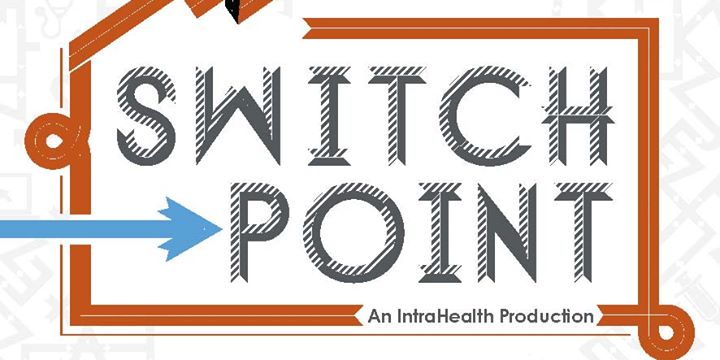Government Grants
Business Grants
Home Owner Programs
Federal Programs
About Us
Request for Information (RFI) Utilization of Unmanned Aerial Systems (UAS) in humanitarian assistance and development
Request for Information (RFI) Utilization of Unmanned Aerial Systems (UAS) in humanitarian assistance and development Reference Number:
7200AA24RFI00004 Release Date:
January 17, 2024 Response Due Date:
February 14, 2024, 11:00 AM, ET Respond to:
Apisit Viriya aviriya@usaid.gov and Daniel Ramirez dramirez@usaid.gov Information Sought The United States Agency for International Development (USAID)’s Bureau for Conflict Prevention and Stabilization (CPS) is hereby issuing a Request for Information (RFI) to gather information to better understand the utilization of unmanned aerial systems (UAS), such as drones, and related technology in humanitarian assistance, stabilization, and development programming.
The RFI offers the opportunity for interested individuals and organizations to provide information about their expertise on, experience with, and lessons learned about UAS and related technology for this purpose.
Background The utilization of unmanned aerial systems (UAS) in development, stabilization, and humanitarian assistance programming mirrors the adoption of UAS technology, such as drones, by other segments of society.
From monitoring electrical lines to lifesaving medicine delivery systems, UAS may offer an impactful and efficient means to carry out essential work in hard-to-reach and difficult places.
Conflicts, such as the one in Ukraine, demonstrate how UAS may be used or adapted for other purposes as well.
As the technology becomes more utilized within development work, USAID and other U. S. government agencies benefit from understanding other organizations’ experience and expertise in UAS utilization, the risks and rewards, and how to develop appropriate mitigation measures to embed ethical guidelines and proper procedures during UAS-related activity planning, implementation, and learning.
In addition, USAID benefits from identifying organizations who already use UAS in innovative ways to achieve development and humanitarian assistance objectives.
Questions for Consideration:
What are your organization’s general policies and guidelines for UAS utilization? Does your organization currently use UAS in development, stabilization, or humanitarian assistance programming? If so, in what ways? What regions? Is the above work on behalf of USAID or another U. S. government agency? Please note, if discussing a particular project.
What lessons have you learned from UAS utilization? Have you experienced local concerns about data collection and surveillance? How are you managing these concerns? In order to operate UAS in foreign countries, what kinds of local permissions did you attain prior to and/ or during utilization? Did you provide training or capacity-building for users to set up, utilize, and conduct maintenance on UAS? If so, how was the training structured and for what duration? What lessons were learned from the training or capacity-building? Are there considerations around consent or establishing clear utilization parameters? What types of UAS are you using? Please, note details such as size, range, ground control mechanism, brand, or other pertinent information.
Do you track where the drones are made and where the components are sourced from? Are those important considerations? If so, why? What makes UAS utilization cost effective, or not, in development or humanitarian assistance settings? How do you secure UAS against hacking into drone control systems or the data stream? How important are effective cybersecurity protections? Aside from cyber issues, what other vulnerabilities do UAS present? How do you ensure UAS are not used as a tools that exacerbate inequity and harm marginalized communities? How are you measuring UAS effectiveness? Are you aware of any organizations that are lead innovators in using UAS in development and humanitarian assistance spaces? Please let us know about your organization if this is an area in which you excel.
Anticipated Process and Next Steps This section provides an overview of the anticipated process following receipt of responses to this RFI.
USAID reserves the right to change the process based on the responses received to this RFI, availability of funding, and other constraints and factors.
Depending on the quantity, nature, and content of RFI responses, follow up steps may include some, none or all of the following:
· A virtual industry day to enable information-sharing · One-on-one follow up discussions between the USAID and all, some or none of the respondents Disclaimer Response to this RFI is voluntary.
Responders are free to address any or all the above questions, as well as provide additional information they think is relevant.
This RFI neither constitutes a Request for Proposal (RFP) nor Notice of Funding Opportunity (NOFO) nor a Request for Application (RFA).
Further, this RFI in no way commits USAID to issue an RFP or NOFO or RFA or to make an award.
Please note that responding to this RFI will not give any advantage to, or preclude, any organization or individual from any RFP/NOFO/RFA that may be subsequently issued as any/all comments received will be strictly for information gathering purposes only.
USAID will not pay for any costs associated with responding to this RFI, and the information received will become the property of USAID.
Therefore, information that cannot be shared must be clearly marked.
In the absence of clear marking, the government will assume the responder does NOT object to the release of its submission to other U. S. government offices or programs.
We look forward to receiving your valuable inputs to better shape our development strategies and practices.
Thank you for your interest in USAID.
7200AA24RFI00004 Release Date:
January 17, 2024 Response Due Date:
February 14, 2024, 11:00 AM, ET Respond to:
Apisit Viriya aviriya@usaid.gov and Daniel Ramirez dramirez@usaid.gov Information Sought The United States Agency for International Development (USAID)’s Bureau for Conflict Prevention and Stabilization (CPS) is hereby issuing a Request for Information (RFI) to gather information to better understand the utilization of unmanned aerial systems (UAS), such as drones, and related technology in humanitarian assistance, stabilization, and development programming.
The RFI offers the opportunity for interested individuals and organizations to provide information about their expertise on, experience with, and lessons learned about UAS and related technology for this purpose.
Background The utilization of unmanned aerial systems (UAS) in development, stabilization, and humanitarian assistance programming mirrors the adoption of UAS technology, such as drones, by other segments of society.
From monitoring electrical lines to lifesaving medicine delivery systems, UAS may offer an impactful and efficient means to carry out essential work in hard-to-reach and difficult places.
Conflicts, such as the one in Ukraine, demonstrate how UAS may be used or adapted for other purposes as well.
As the technology becomes more utilized within development work, USAID and other U. S. government agencies benefit from understanding other organizations’ experience and expertise in UAS utilization, the risks and rewards, and how to develop appropriate mitigation measures to embed ethical guidelines and proper procedures during UAS-related activity planning, implementation, and learning.
In addition, USAID benefits from identifying organizations who already use UAS in innovative ways to achieve development and humanitarian assistance objectives.
Questions for Consideration:
What are your organization’s general policies and guidelines for UAS utilization? Does your organization currently use UAS in development, stabilization, or humanitarian assistance programming? If so, in what ways? What regions? Is the above work on behalf of USAID or another U. S. government agency? Please note, if discussing a particular project.
What lessons have you learned from UAS utilization? Have you experienced local concerns about data collection and surveillance? How are you managing these concerns? In order to operate UAS in foreign countries, what kinds of local permissions did you attain prior to and/ or during utilization? Did you provide training or capacity-building for users to set up, utilize, and conduct maintenance on UAS? If so, how was the training structured and for what duration? What lessons were learned from the training or capacity-building? Are there considerations around consent or establishing clear utilization parameters? What types of UAS are you using? Please, note details such as size, range, ground control mechanism, brand, or other pertinent information.
Do you track where the drones are made and where the components are sourced from? Are those important considerations? If so, why? What makes UAS utilization cost effective, or not, in development or humanitarian assistance settings? How do you secure UAS against hacking into drone control systems or the data stream? How important are effective cybersecurity protections? Aside from cyber issues, what other vulnerabilities do UAS present? How do you ensure UAS are not used as a tools that exacerbate inequity and harm marginalized communities? How are you measuring UAS effectiveness? Are you aware of any organizations that are lead innovators in using UAS in development and humanitarian assistance spaces? Please let us know about your organization if this is an area in which you excel.
Anticipated Process and Next Steps This section provides an overview of the anticipated process following receipt of responses to this RFI.
USAID reserves the right to change the process based on the responses received to this RFI, availability of funding, and other constraints and factors.
Depending on the quantity, nature, and content of RFI responses, follow up steps may include some, none or all of the following:
· A virtual industry day to enable information-sharing · One-on-one follow up discussions between the USAID and all, some or none of the respondents Disclaimer Response to this RFI is voluntary.
Responders are free to address any or all the above questions, as well as provide additional information they think is relevant.
This RFI neither constitutes a Request for Proposal (RFP) nor Notice of Funding Opportunity (NOFO) nor a Request for Application (RFA).
Further, this RFI in no way commits USAID to issue an RFP or NOFO or RFA or to make an award.
Please note that responding to this RFI will not give any advantage to, or preclude, any organization or individual from any RFP/NOFO/RFA that may be subsequently issued as any/all comments received will be strictly for information gathering purposes only.
USAID will not pay for any costs associated with responding to this RFI, and the information received will become the property of USAID.
Therefore, information that cannot be shared must be clearly marked.
In the absence of clear marking, the government will assume the responder does NOT object to the release of its submission to other U. S. government offices or programs.
We look forward to receiving your valuable inputs to better shape our development strategies and practices.
Thank you for your interest in USAID.
Agency: Agency for International Development
Office: Agency for International Development
Estimated Funding: $0
Office: Agency for International Development
Estimated Funding: $0
Relevant Nonprofit Program Categories
Obtain Full Opportunity Text:
https://grants.nih.gov/grants/guide/rfa-files/RFA-DA-25-060.html
Additional Information of Eligibility:
Other Eligible Applicants include the following: Alaska Native and Native Hawaiian Serving Institutions; Asian American Native American Pacific Islander Serving Institutions (AANAPISISs); Eligible Agencies of the Federal Government; Faith-based or Community-based Organizations; Hispanic-serving Institutions; Historically Black Colleges and Universities (HBCUs); Indian/Native American Tribal Governments (Other than Federally Recognized); Non-domestic (non-U.S.) Entities (Foreign Organizations); Regional Organizations; Tribally Controlled Colleges and Universities (TCCUs) ; U. S. Territory or Possession; Non-domestic (non-U.S.) Entities (Foreign Organizations) are not eligible to apply.
Non-domestic (non-U.S.) components of U. S. Organizations are not eligible to apply.
Foreign components, as defined in the NIH Grants Policy Statement, are allowed.
Full Opportunity Web Address:
http://grants.nih.gov/grants/guide/rfa-files/RFA-DA-25-060.html
Contact:
Agency Email Description:
Daniel Ramirez, Agreements Specialist
Agency Email:
Date Posted:
2024-01-17
Application Due Date:
Archive Date:
2024-03-15
Social Entrepreneurship
Spotlight
Reviving Ancient Indian Art Forms – Empowering Artisans Towards Entrepreneurship

Rivaayat is an initiative by Shri Ram College of Commerce, Delhi to revive various dying art form and solve innumerable problems faced by the artisans. Rivaayat began with reviving a 20,000-year-old art form of pottery that is a means of survival for 600 families residing in Uttam Nagar, Delhi.

